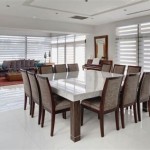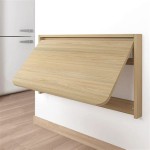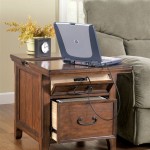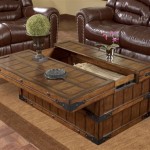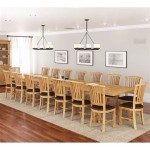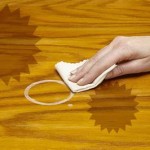Selecting the Optimal Board Game Table and Chairs: A Comprehensive Guide
The modern board game hobby has evolved beyond casual family gatherings into a serious pursuit for many. This evolution necessitates a dedicated space, optimized for prolonged gameplay and comfortable engagement. A well-chosen board game table and coordinating chairs are pivotal components in creating such an environment, enhancing both the aesthetic and functional aspects of the gaming experience.
The selection process, however, requires careful consideration of various factors. Size, material, features, and budget all play significant roles in determining the ideal setup. Furthermore, understanding the specific needs of the gaming group, including the types of games played and the average duration of sessions, is crucial for making an informed decision. This article provides a comprehensive guide to navigating the intricacies of choosing the optimal board game table and chairs.
Key Point 1: Understanding Table Size and Shape Considerations
The size and shape of the board game table are paramount concerns, directly impacting the types of games that can be comfortably accommodated and the number of players who can participate. Rectangular tables are generally the most versatile, offering ample space for large-scale board games and card games alike. Square tables, while visually appealing, may be more suitable for smaller gaming groups or games with limited board space requirements.
Round tables foster a sense of community and equal participation, particularly beneficial for role-playing games (RPGs) and cooperative games. However, round tables may not be ideal for games requiring individual player spaces or extensive layouts. Oval tables present a compromise between rectangular and round shapes, offering a larger surface area than round tables while still promoting interaction.
Beyond the basic shape, the dimensions of the table are critical. Measure the space where the table will be located to ensure sufficient clearance for movement around the table. Consider the average number of players expected to participate regularly. A table that is too small will constrain gameplay, while an excessively large table may feel isolating and make it difficult to reach components.
Depth, in particular, is an often-overlooked dimension. Many modern board games require a substantial depth to accommodate player boards, card rows, and resource management systems. A shallow table may force players to stack components or place them precariously close to the edge. As a general guideline, a table depth of at least 3 feet is recommended for most modern board games, with larger games potentially requiring even more space.
Consider tables with extensions or leaves if the number of players fluctuates significantly. These adjustable tables offer the flexibility to expand the playing surface when needed and contract it for smaller gatherings or storage purposes. These types can be particularly useful if game nights fluctuate between smaller, two-player games and large group events.
Furthermore, the table's height should be ergonomically sound for comfortable gameplay. A standard table height of approximately 30 inches is generally suitable for adults. However, taller individuals may benefit from a slightly higher table, while shorter individuals may find a lower table more comfortable. Adjustable height tables provide the ultimate in customization, allowing players to fine-tune the table height to their individual preferences.
Key Point 2: Exploring Material and Features for Enhanced Functionality
The materials used in the construction of a board game table significantly impact its durability, aesthetics, and functionality. Solid wood tables offer exceptional strength and a timeless appeal, but tend to be more expensive. Engineered wood options, such as plywood and MDF, provide a more affordable alternative while still offering reasonable durability. Laminate surfaces are easy to clean and maintain, making them a practical choice for families with young children or for groups that tend to snack during gameplay.
Felt or neoprene playing surfaces enhance the tactile experience and protect both the game components and the table itself. These surfaces provide a smooth, cushioned surface for dice rolling and card handling, minimizing noise and preventing scratches. Recessed playing surfaces prevent components from sliding off the table and offer a designated area for the game in progress. Some tables also include removable toppers, allowing them to be used as conventional dining tables when not in use for gaming.
Integrated storage solutions are a valuable feature for board game tables. Drawers, shelves, and hidden compartments provide convenient storage for game components, dice, and other accessories. These storage solutions minimize clutter and keep the gaming area organized. Cup holders are another popular feature, preventing spills and keeping beverages within easy reach. USB charging ports and power outlets can accommodate electronic devices, such as tablets or phones, which may be used for tracking scores or accessing online resources.
Consider features such as rail systems that allows players to customize their table with accessories like player dashboards, card holders and other organizational tools. These rail systems provide a framework for further customization and organization of the gaming area. The modular design of these systems allows players to tailor the table to their specific needs and preferences.
The style of the table should complement the overall aesthetic of the room in which it will be placed. Traditional designs evoke a sense of elegance and sophistication, while modern designs offer a sleek and minimalist look. Consider the existing furniture and decor to ensure a cohesive and harmonious design scheme. The color and finish of the table should also be chosen to complement the existing color palette of the room.
Key Point 3: Selecting Complementary Chairs for Comfort and Ergonomics
The chairs used in conjunction with a board game table are just as important as the table itself. Comfortable chairs are essential for prolonged gameplay, preventing fatigue and discomfort. Ergonomic considerations are paramount, ensuring that players maintain good posture and avoid strain. Seat height, back support, and armrests all contribute to the overall comfort and ergonomics of the chairs.
The seat height should be appropriate for the height of the table, allowing players to rest their feet comfortably on the floor. Adjustable seat height chairs provide the flexibility to accommodate players of different heights. Back support is critical for maintaining good posture and preventing back pain. Chairs with lumbar support are particularly beneficial for individuals with pre-existing back problems.
Armrests provide additional support and comfort, reducing strain on the shoulders and neck. Armrests should be adjustable in height and width to accommodate players of different sizes and body types. Some chairs feature padded armrests for enhanced comfort. Consider chairs made of breathable materials to prevent overheating and discomfort during long gaming sessions.
The style of the chairs should complement the style of the table. Matching chairs and tables create a cohesive and harmonious look, while contrasting styles can add visual interest. Consider the material and finish of the chairs to ensure they are durable and easy to clean. Upholstered chairs offer a luxurious and comfortable seating experience, while wooden chairs provide a more classic and timeless look.
Consider chairs with wheels for ease of movement around the table. These chairs allow players to easily reach game components and interact with other players without having to stand up. Chairs with swivel bases offer similar flexibility, allowing players to rotate freely without having to move the entire chair. When using chairs with wheels, ensure the floor surface is protected with chair mats to prevent scratches and damage.
Stackable chairs are a practical choice for gaming groups that frequently host large gatherings. These chairs can be easily stored when not in use, minimizing clutter and maximizing space. Folding chairs provide another space-saving option, particularly useful for smaller gaming areas. Consider the weight capacity of the chairs to ensure they can accommodate all players comfortably.
Ultimately, the selection of board game table and chairs should be guided by individual needs and preferences. A well-chosen setup will enhance the gaming experience, promoting comfort, engagement, and enjoyment for all participants. Thoroughly researching available options, considering the factors outlined above, and prioritizing ergonomic considerations will lead to the creation of an optimal gaming environment.

The Modular Gaming Table Wyrmwood

Dining Tables That Convert Into Game Theory

Board Game Table With Removable Topper Rpg Gaming Convertible Dining Puzzle W Cover Card Etsy
/pic2673695.jpg?strip=all)
Tables And Chairs Board Game Boardgamegeek

Best Chairs And Benches For Board Gaming Geeknson

Game Theory Tables Stylish Quality And Functional Board

Table Of Ultimate Gaming The Game

Vienna Game Table Billoiards Florida South Miami North Central Dania Beach Broward Instock Gameroom Showroom Playroom Rec Room Man Cave Used New Refurbished Buy Rent Own Classic Collection Billiards

Freeman Game Table And Four Leather Chairs

Vienna Game Table Poker Presidential Billiards

